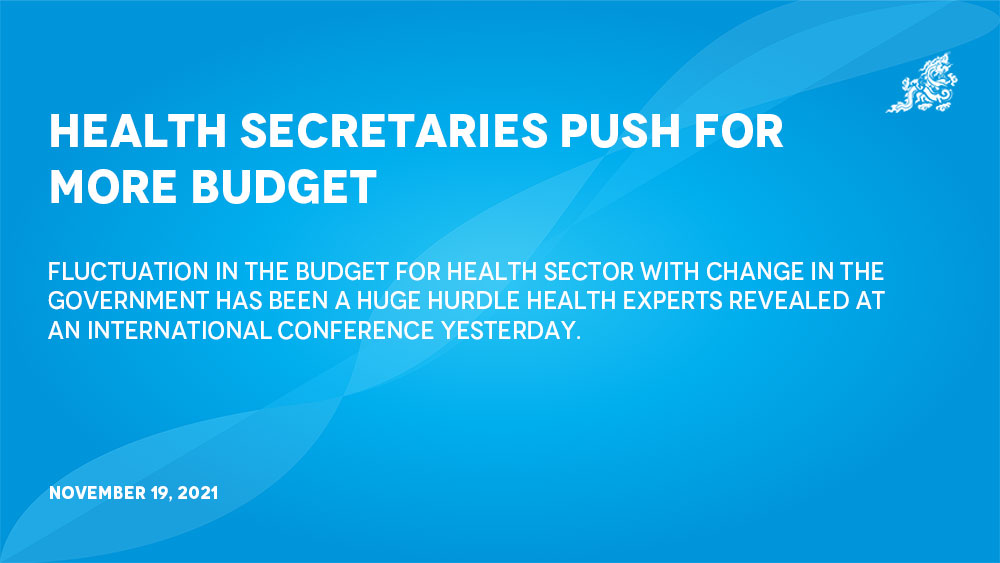Yangyel Lhaden
Fluctuation in the budget for health sector with change in the government has been a huge hurdle health experts revealed at an international conference yesterday.
For instance, budget allocation fell over the years from 5.7 percent of gross domestic product (GDP) spent on the health sector in 2000 to 3.55 percent in 2012. However, it bounced back steadily from 2018. In fiscal year 2018-2019 and 2019-2020, 4 percent and 4.5 percent of GDP was allocated to health sector respectively. In the current fiscal year (FY), health sector was given 5 percent of GDP.
Former Health Secretary Dr Ugen Dophu said that with every changing government the budget allocation varied. “There should be a clear policy for allocation of a percentage of GDP to health sector so that budget to health does not fluctuate.”
Health Secretary Dr Pandup Tshering said that the budget allocated to health is decreasing over the years and health financing would become more challenging when the country graduates from the least developed countries group.
“With the escalation of healthcare costs, the sustainability of free health services will become a challenge,” said the secretary, who presented about Bhutan Health System and the way forward in 21st century in the health system at the seventh International Medical and Health Sciences which was conducted virtually yesterday.
He shared about the need for better health financing whereby the government could increase the allocation of the fund and at the same time need to improve on the efficient use of the available resources.
According to National Health Accounts (NHA) 2021 states out of pocket expenditure remains a concern although more than 80 percent of the total spending for health is contributed by the government.
Out of pocket expenditure amounted to more than Nu 1.108 billion (B) and 18 percent of current health expenditure (CHE) in FY 2018-2019 which increased to Nu 1.180B in fiscal year 2019-2020 which amounted to 15 percent of CHE.
NHA 2021 also states the total CHE for FY 2018-2019 and 2019-2020 were Nu 6.233B and Nu 7.656B respectively which included expenditures made by the government, corporate and household during the fiscal year including the cost of capital assets consumption in the health system. The contribution of the government on CHE was about 3 percent of the GDP in both fiscal years.
Former Health Secretary Dr Sangay Thinley talked about health and care of an ageing population and Mr Mila Dorji shared his research on pre-hospital emergency medical response in Bhutan yesterday.
The conference is an annual activity of Khesar Gyalpo University of Medical Sciences of Bhutan (KGUMSB) to promote and strengthen research for evidence-based practise and decision-making.
Director with KGUMSB, Neyzang Wangmo said that the conference was a platform where various speakers share their research, knowledge, and recommendations with the main objective for policymakers to make informed policies.
This year’s theme for IMHS is “Rethinking the health system in the 21st century.”
Edited by Tshering Palden


